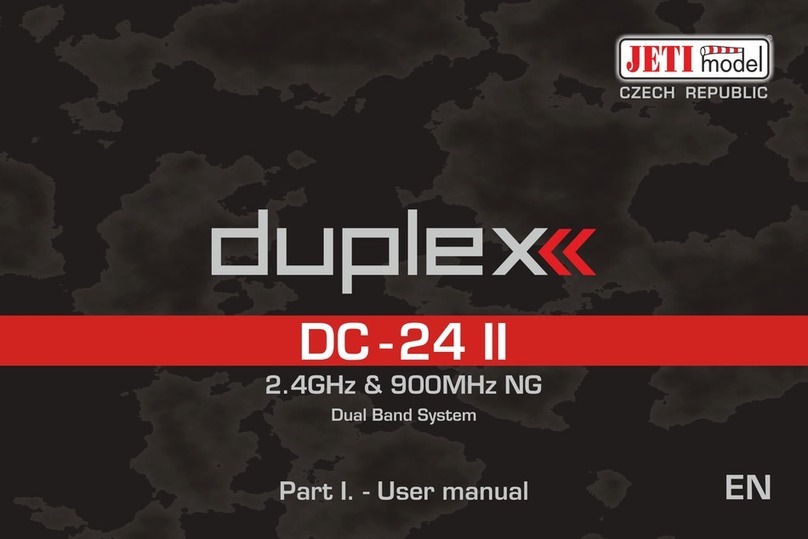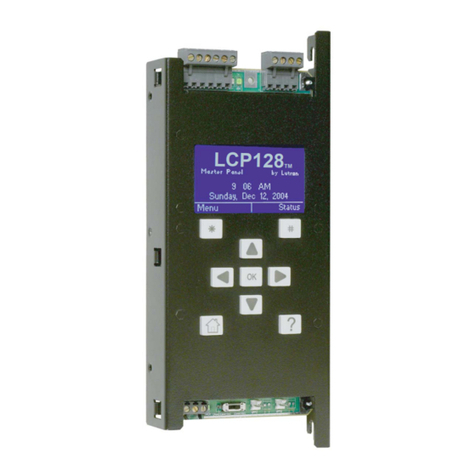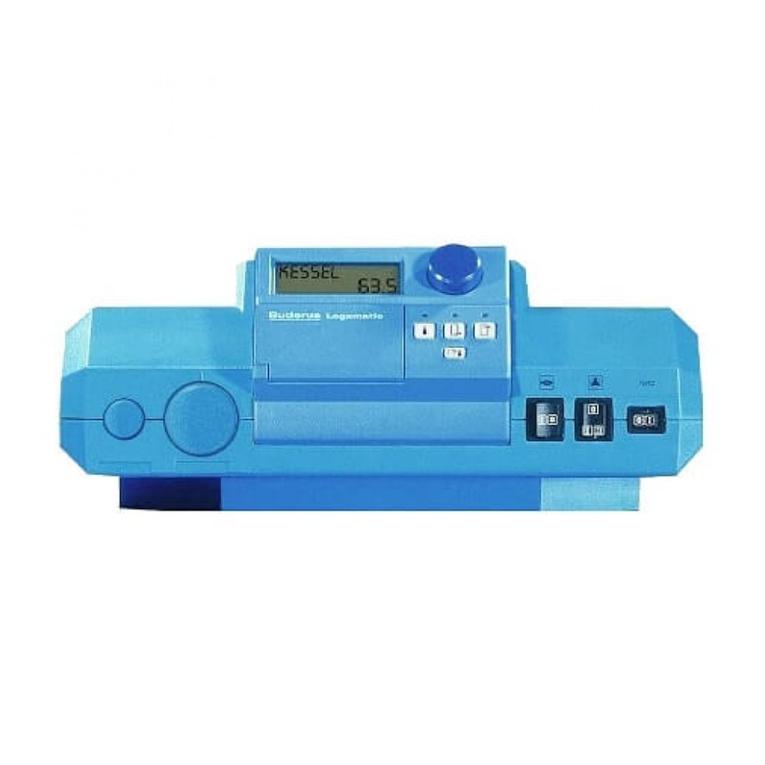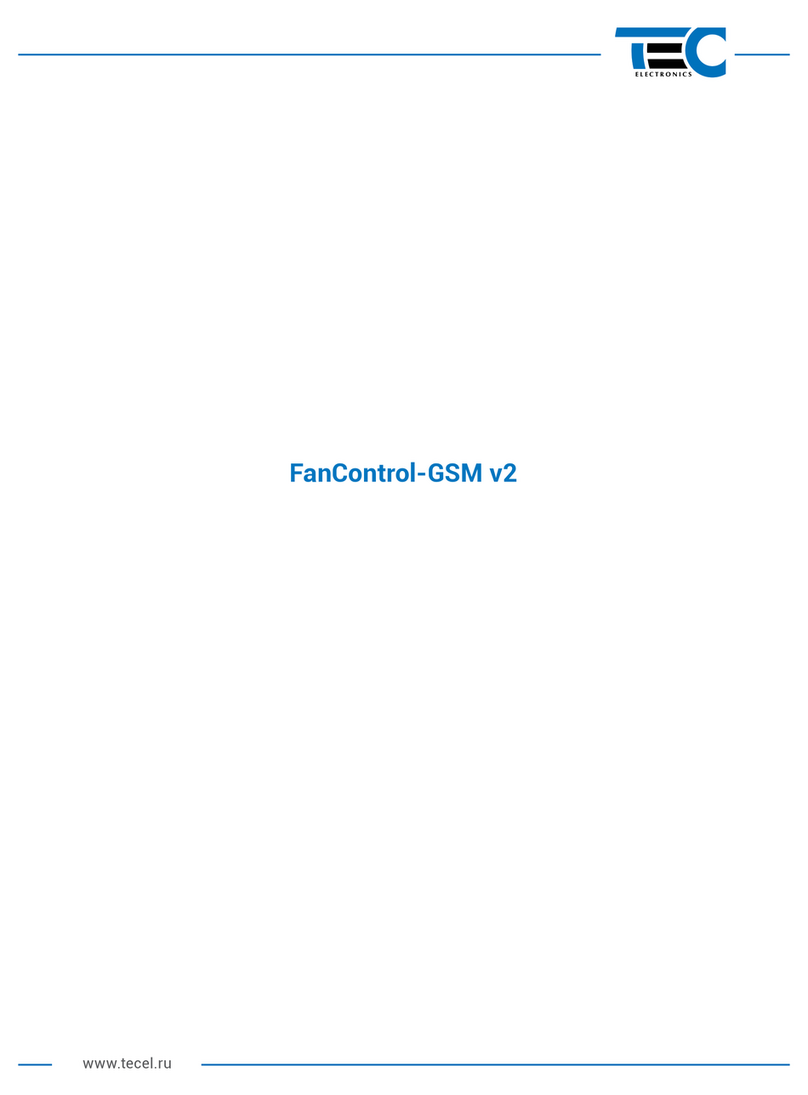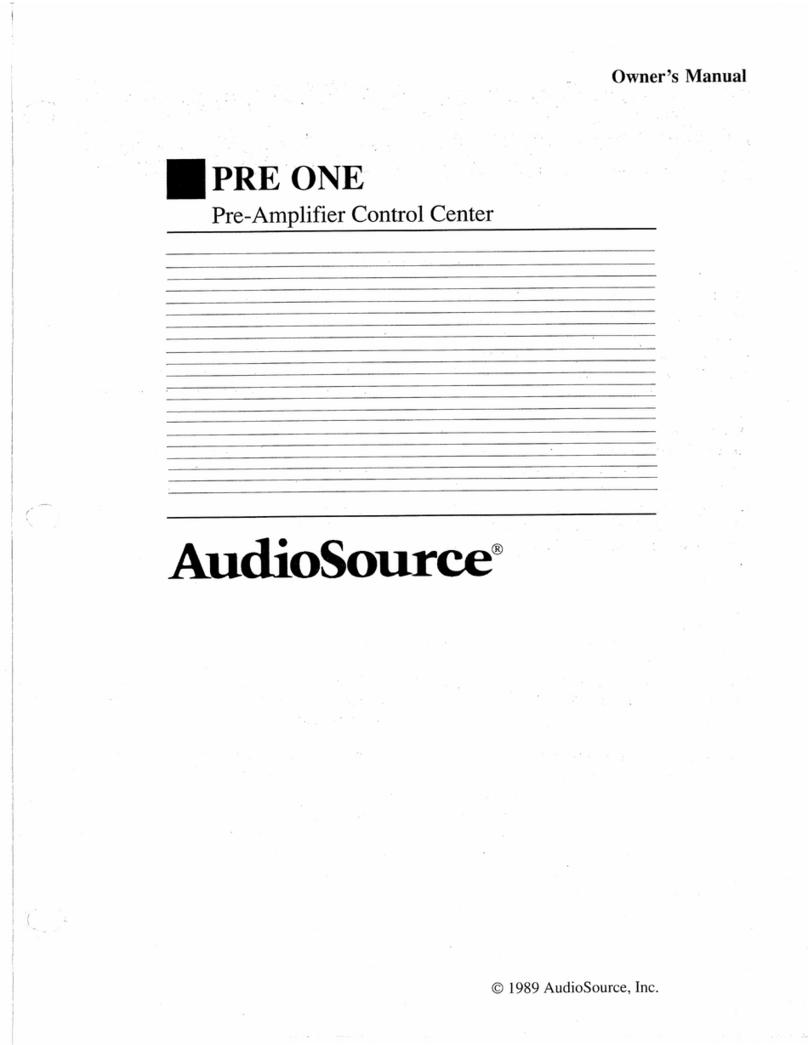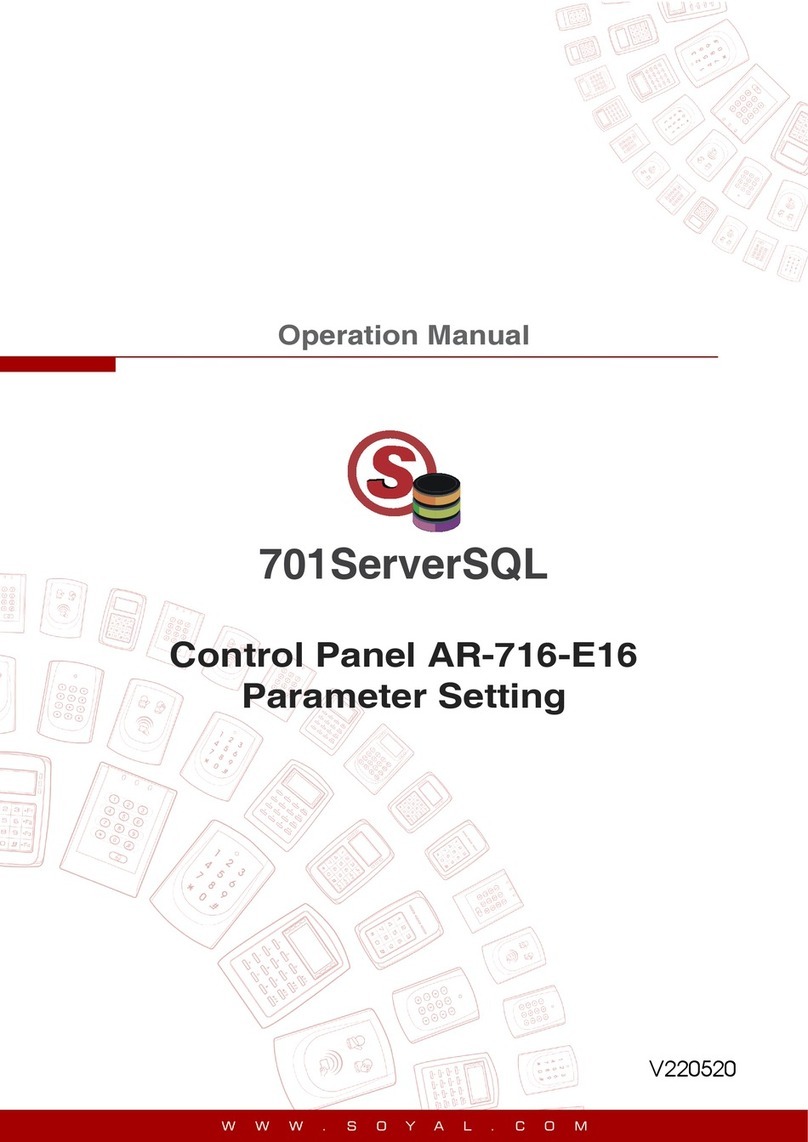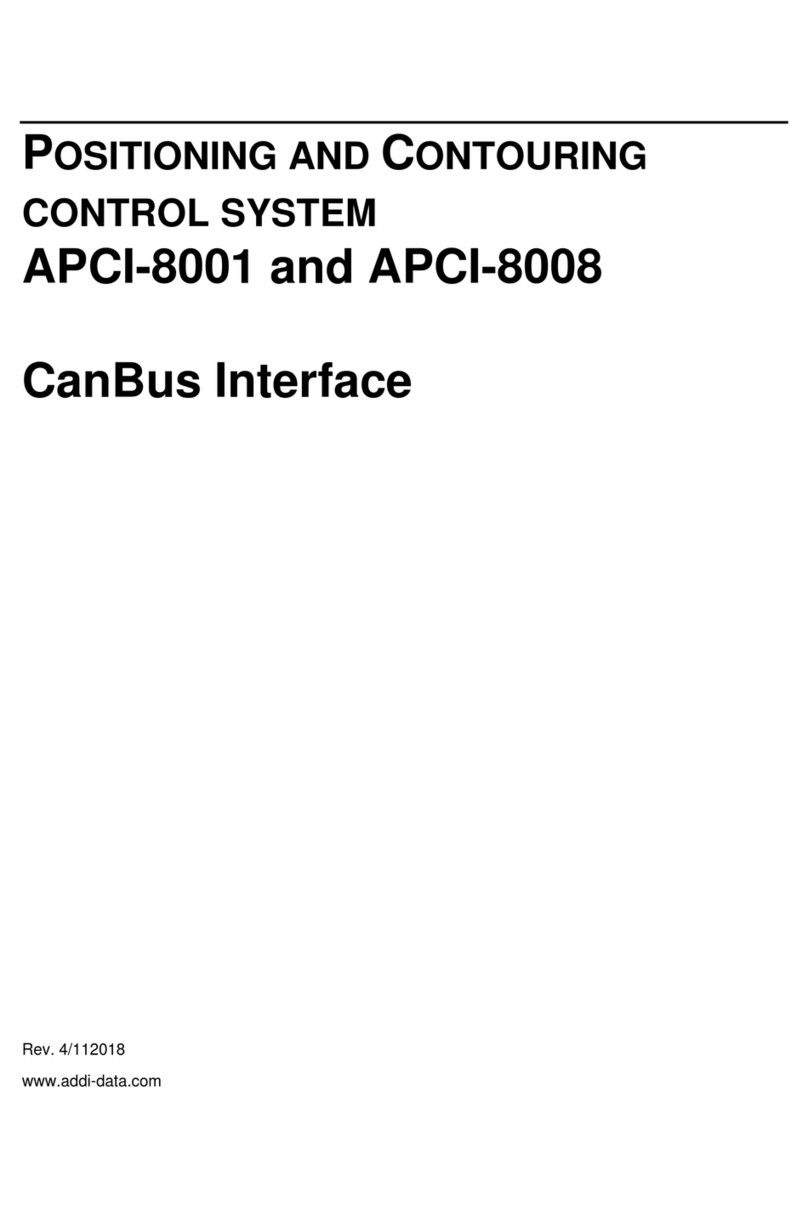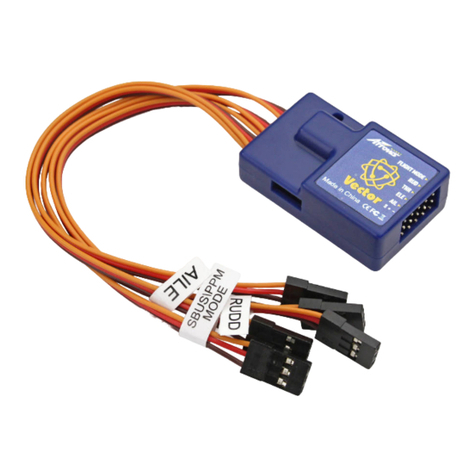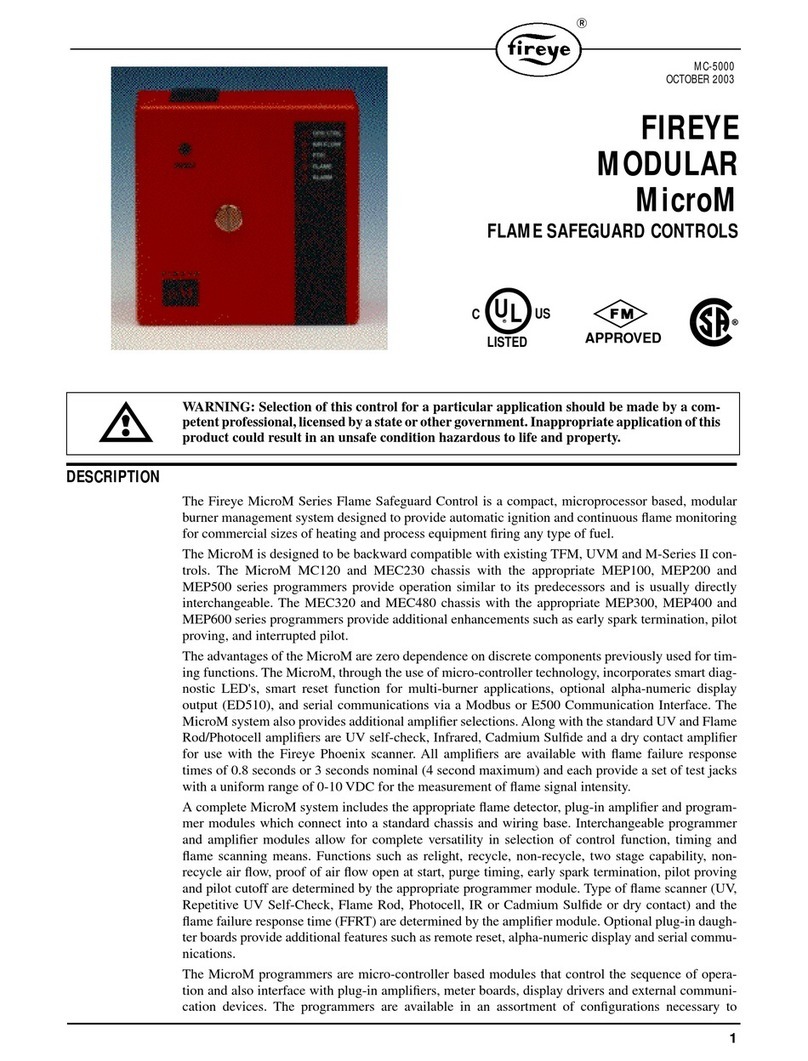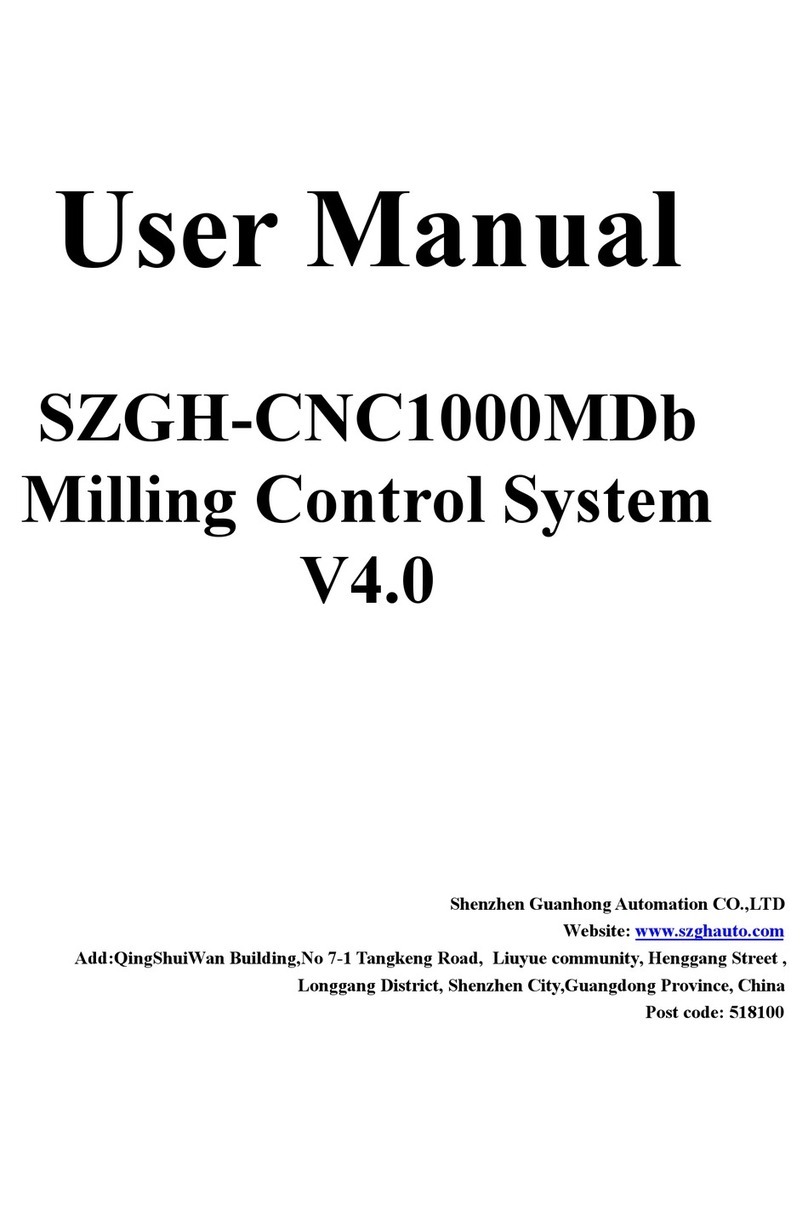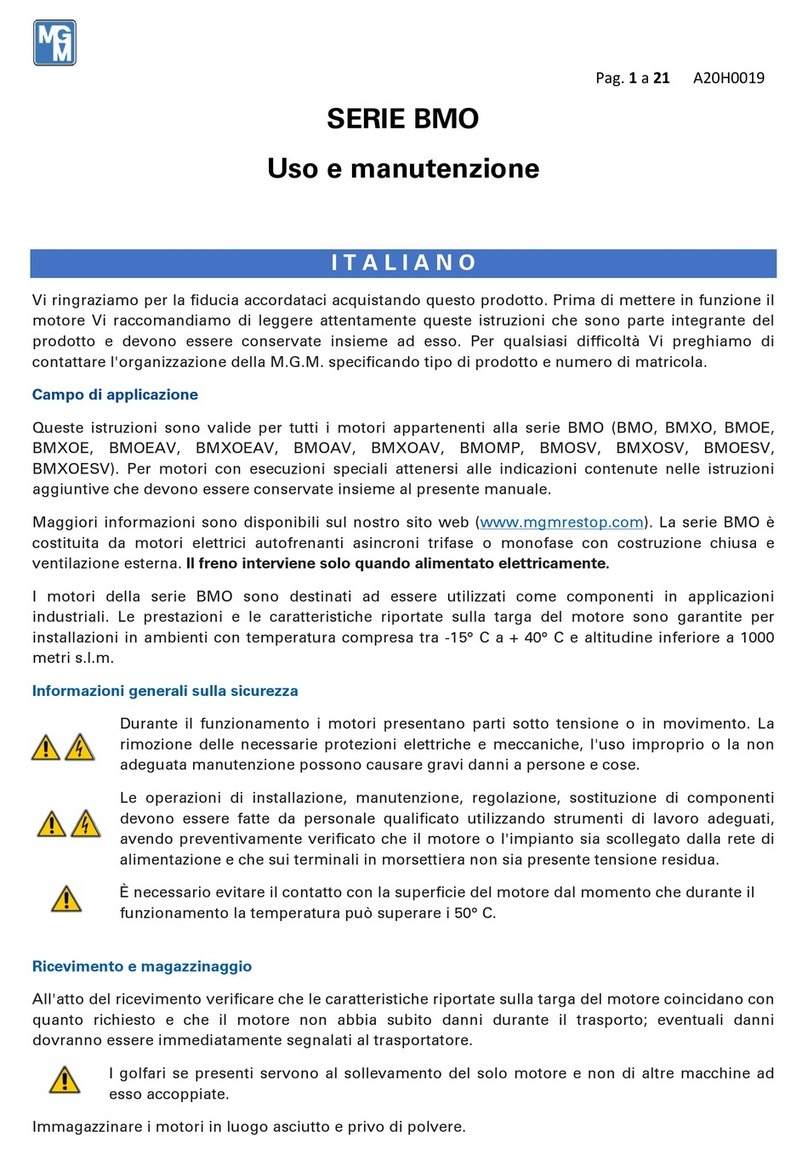Geobrugg RXE-1000 User manual

European Technical
Approval
ETA–13/0225
ETAG 027: Category A
Energy class 3: 1000 kJ
Height: 4 - 5m
Testing certificate S 13-1
Federal office of environmental
Switzerland
Test institute
Federal Research Institute WSL
Birmensdorf, Switzerland
Date: 08.10.2018
Edition: 17
© Geobrugg AG
CH-8590 Romanshorn
Product Manual
RXE-1000
ROCKFALL BARRIER

Page 2/55
© Geobrugg AG, CH-8590 Romanshorn, Switzerland RXE-1000 / 17

Page 3/55
© Geobrugg AG, CH-8590 Romanshorn, Switzerland RXE-1000 / 17

Page 4/55
© Geobrugg AG, CH-8590 Romanshorn, Switzerland RXE-1000 / 17
FUNCTION AND STRUCTURE OF THE MANUAL
This product manual ensures that Geobrugg rockfall protection systems are manufactured without errors in ac-
cordance with the latest technical findings, that their area of application is clearly defined, that their functionality is
guaranteed, and that their installation is performed and checked properly.
The product manual is divided into the following parts:
•Proof of quality assurance
•System overview/rope guide
•Staking out
•Assembly details
•ISO 9001 certificate
This document does not claim to be exhaustive. Before starting an installation, it must be ensured that the copy of
the product manual is up-to-date. It is designed for general standard applications and does not take into account
any project-specific parameters. Geobrugg cannot be held liable for any additional costs which may arise in spe-
cial cases. If anything is unclear, please contact the manufacturer. Geobrugg AG's general terms and conditions
apply.
RESPONSIBILITY FOR THE CONTENT:
Geobrugg AG
Protection Systems
Aachstrasse 11
PO Box
CH-8590 Romanshorn, Switzerland
www.geobrugg.com
Romanshorn, 08.10.2018
(Stamp / legally valid signatures)

Page 5/55
© Geobrugg AG, CH-8590 Romanshorn, Switzerland RXE-1000 / 17
I RANGE OF APPLICATION
The design of rockfall protection systems is based on detailed investigations by specialized engineering firms,
particularly taking into account the following geotechnical aspects to define the range of possible applications:
•Previous Rockfall events
•Condition of the rockfall breakout zone
•Stability assessment of the entire rockfall zone
•Rockfall frequency
•Size of the blocks to be intercepted
•Trajectories and bounce heights of stones
•Calculation of kinetic energies
•Positioning of the barrier (considering the local topography)
•Anchorage conditions
II QUALITY OF THE SYSTEM COMPONENTS
Geobrugg AG, formerly the Geobrugg Schutzsysteme (Geobrugg Protection Systems) department of Fatzer AG,
Romanshorn, has been certified according to the quality management system requirements (ISO 9001:2008) un-
der the registration number CH-34372 since August 22nd, 1995. The certification center is the SQS (Swiss Asso-
ciation for Quality and Management Systems), which is a member of IQNet. The quality manual specifies in full
the way in which the individual system components (basic material, commercial products, and end products) are
checked extensively to eliminate poor quality. You can find the corresponding certificates in the appendix.
III FUNCTIONAL EFFICIENCY OF THE BARRIER SYSTEMS
The functional efficiency of the system is based on one-to-one rockfall tests, carried out and tested in accordance
with the guidelines for approval of rockfall protection nets ETAG 027 and the Swiss guideline of type approval of
rockfall barriers in Walenstadt, Switzerland (SG). The one-to-one rockfall tests are carried out by dropping a block
vertically into the middle field of a three-field barrier. The distance between posts is 10 m, and an impact velocity
of 25 m/s is reached. The full-scale tests were approved by a notified test body and the European Technical Ap-
proval (ETA) has the number ETA –13/0225 and the Swiss testing certificate of the federal office of environmen-
tal (BAFU) with the testing-No. S 13-1.
IV QUALITY CONTROL FOR INSTALLATION
This product manual describes in detail the different steps for installation of the barriers. These steps must be
faithfully followed by local contractors.

Page 6/55
© Geobrugg AG, CH-8590 Romanshorn, Switzerland RXE-1000 / 17
PRODUCT LIABILITY
Rockfall, landslides, debris flows or avalanches are sporadic and unpredictable. The cause is human (buildings,
etc.), for example, or forces beyond human control (weather, earthquakes, etc.). The multiplicity of factors that
may trigger such events means that guaranteeing the safety of persons and property is not an exact science.
However, the risks of injury and loss of property can be substantially reduced by appropriate calculations that ap-
ply good engineering practices, and by using predictable parameters along with the corresponding implementa-
tion of flawless protective measures in identified risk areas.
Monitoring and maintenance of such systems are an absolute requirement to ensure the desired safety level.
System safety can also be diminished through events, natural disasters, inadequate dimensioning or failure to
use standard components, systems and original parts, but also through corrosion (caused by environmental pollu-
tion or other man-made factors as well as other external influences).
In contrast to the one-to-one rockfall tests, which indeed test an extreme load case but still only demonstrate a
standardized situation, in the field the layout and design of a protection system can vary greatly because of the
topography. The influence of such alterations and adaptations cannot always be determined exactly. Critical
points are, for example, post spacing, changes in direction, placement angle of the rope anchor, and the direction
and velocity of impact.
Geobrugg can assist with estimating the influence of larger deviations and special situations, and can offer rec-
ommendations for feasible solutions. Geobrugg cannot, however, guarantee the same behavior as in the one-to-
one rockfall tests. In critical cases, it is advisable to reinforce particular components as compared with the stand-
ard barrier.

Page 7/55
© Geobrugg AG, CH-8590 Romanshorn, Switzerland RXE-1000 / 17
CONTENT
1HAZARD STATEMENT ....................................................................................................... 8
2INSTALLATION TOOLS ..................................................................................................... 9
3. USING THE WIRE ROPE CLIPS ....................................................................................... 10
4. STAKING OUT DEPENDING ON THE TERRAIN............................................................... 12
5. STAKING OUT GEOMETRY ............................................................................................. 14
6. ROPE ANCHOR - PLACEMENT ........................................................................................ 18
7. ANCHORING THE BASE PLATE ...................................................................................... 19
8. PREPARATION OF THE NETS AND POSTS ..................................................................... 21
9. CRANE AND HELICOPTER INSTALLATION .................................................................... 27
10. INSTALLING THE SUPERSTRUCTURE ........................................................................... 28
11. ASSEMBLY DETAILS ....................................................................................................... 33
12. SUPPORT ROPE SEPARATION WITH INTERMEDIATE SUSPENSION ............................. 46
13. SPECIAL SOLUTION ADDITIONAL TO THE STANDRAD ................................................. 50
14. FINAL INSPECTION......................................................................................................... 51

Page 8/55
© Geobrugg AG, CH-8590 Romanshorn, Switzerland RXE-1000 / 17
EXPLANATION OF USED SYMBOLS
Safety indication: essential to follow
Note / Reminder that the system is correctly installed easily
A consultation with Geobrugg is recommended
Upslope
Downslope
1HAZARD STATEMENT
QUALIFICATION OF THE GROUP LEADER
The management of installation may only be done by a qualified group leader.
CABLES WITH PRETENSION
Cables are under tension. During installation and pretensioning of the cables, make sure that there are no
persons in the danger zone.
RELEASING OF PARTS WITH PRETENSION
Releasing or cutting of components with pretension should be avoided. Should there still be necessary,
the utmost caution.

Page 9/55
© Geobrugg AG, CH-8590 Romanshorn, Switzerland RXE-1000 / 17
2INSTALLATION TOOLS
MARKING
•30 –50 m measuring tape
•Measure stick
•5 red and white ranging poles
•Inclinometer
•Spray can
•Wooden peg or iron peg (min. 3x for each field)
•Hammer/mallet
•Manual
INSTALLATION
•Open-ended or ring wrench
•Socket wrench set with ratchet
•Torque wrench, range 25 –400 Nm (see tightening torque required for wire rope clips and base
plate fastening nuts)
•Open-ended wrench for base plate fastening nuts
•Felco C16 or C112 wire rope cutter or similar; 12 mm cutting capacity
•Cutting-Off wheel or hammer wire cutter; 28 mm cutting capacity
•pincers, flat-nose pliers
•2 mm galvanized wire strands or wire
•Angle spirit level
•Roll of adhesive tape
•Rope clamp, small 8 –16 mm / large 14 –26 mm (min. 2x)
•At least 2 tension belts
•Cable winch hoist, e.g. LUG-ALL®
•Chain hoist or HABEGGER wire rope hoist, min. 1.5 t (15 kN)
•Auxiliary ropes

Page 10/55
© Geobrugg Gruppe, CH-8590 Romanshorn, Switzerland RXE-1000 / 17
t
e
3. USING THE WIRE ROPE CLIPS
Instructions below apply to all wire rope clips according FF-C-450 type 1 class 1
(similar EN 13411-5 type 2) delivered by Geobrugg AG.
The distance ebetween the wire rope clips should be at least 1 x t but not exceed 2
x t , where tis the width of the clamping jaws. The loose rope end has to be 3 x e at
a minimum. Geobrugg recommends looping up the remaining free section and fixing
it directly behind the last wire rope clip on the tightened rope.
If you are using a thimble in the loop structure, the first wire rope clip must be at-
tached directly next to the thimble. For loops without a thimble the length hbetween
the first wire rope clip and the point of load incidence must minimally be 15-time the
nominal diameter of the rope. In unloaded condition the length hof the loop should
be not less than the double of the loop width h/2.
The clamping brackets (U-brackets) must always be fitted to the unstressed end of the rope, the clamping jaws
(saddle) must always be fitted to the strained rope („never saddle a dead horse“).
During tightening the nuts have to be tensioned equally (alternately) until the required tightening torque is
reached.
The required tightening torques with lubrication apply to wire rope clips whose
bearing surfaces and the threads of the nuts have been greased with Panolin CL
60 multipurpose lubricant spray (or an equivalent lubricant).
FF-C-450 type 1 class 1
min. 3 x e
h/2
h

Page 11/55
© Geobrugg AG, CH-8590 Romanshorn, Switzerland RXE-1000 / 17
Wire rope di-
ameter
[mm]
Size
of the
wire rope clip
Required
amount of
wire rope clips
Required
tightening
torque lubricat-
ed
[Nm]
Required
tightening
torque
unlubricated
[Nm]
Wrench
size
[mm]
16
5/8“
3
90
170
24
18 - 20
3/4‘‘
4
90
180
27
22
7/8“
4
150
330
32
A visible contusion of the wire ropes positively indicates that the wire rope clips have been tightened to
the required tightening torque.
Undamaged wire rope clips could be reused. Especially the threads and clamping jaw have to be
checked.
Wire rope clips always have to be installed and used with the required tensioning torque.
After the first load application the tightening torque has to be checked and if
not fulfilled adjusted to the required value.

Page 12/55
© Geobrugg Gruppe, CH-8590 Romanshorn, Switzerland RXE-1000 / 17
4. STAKING OUT DEPENDING ON THE TERRAIN
GENERAL PRINCIPLES FOR STAKING OUT
Position of barrier
To determine the optimal position of the barrier are available proven simulation programs. Unfavorable locations
with large jump heights or ground shadows are detected.
Lining
Basically, the barrier line is to be planned so that it runs as straight as possible and horizontally. Irregular lines
and lowering terrain and terrain curvatures between the posts are to avoid or compensate if possible.
Foundation
The base plate support of the foundation must be laid against the terrain in such a way that the lower bottom
support rope remains close to the ground.
The base plate must be positioned in such a way that the bottom support rope bypasses and is not damaged by
the edges of the foundation.

Page 13/55
© Geobrugg AG, CH-8590 Romanshorn, Switzerland RXE-1000 / 17
Height difference in barrier line
h: barrier height
x: post distance
n: modification of the length of the mesh
h: difference in height between two neighboring posts
Tab. 2
Post distance
6-8 m
8-10 m
10-12 m
h
< 0.50 m
< 1.00 m
< 1.50 m
No adjustment necessary
h
> 0.50 m
> 1.00 m
> 1.50 m
Net must be adjusted
If the height difference is greater than in Tab.2 you must contact Geobrugg to enable the correct length of nets to
be determined.
h
h
x
x
n

Page 14/55
© Geobrugg Gruppe, CH-8590 Romanshorn, Switzerland RXE-1000 / 17
5. STAKING OUT GEOMETRY
GENERAL PRINCIPLES FOR STAKING OUT GEOMETRY
Standard staking out dimension
If the standard staking out dimensions and dimensional tolerances are kept, the delivered barrier can be installed
easily, and all components are functioning properly at an event.
Adaptation to the terrain
Depending on the terrain the standard staking cannot be kept. To ensure the proper functioning of the barrier of-
ten small adjustments in cross section or length of the nets, ropes, posts are sufficient.
If Geobrugg is informed of the discrepancies can be found a customized solution together.
1)
Rope anchor
Lateral anchor
2)
Upslope change in direction
Downslope anchor rope
3)
Intermediate anchor rope
with support rope separation
4)
Downslope change in direction
Retaining rope
5)
Intermediate anchor
rope
without support rope
separation
1)
5)
3)
4)
2)

Page 15/55
© Geobrugg AG, CH-8590 Romanshorn, Switzerland RXE-1000 / 17
STANDARD STAKING OUT IN STRAIGHT BARRIER LINE
a
x
x/2
c
d
A,E,
H
C
D
D
x/2
The following table applies to a ground slope of 30°- 90°
Dimensions in m; dimension tolerance ± 0,20 m
h
a
c
d 1)
e
3.00
4.50
1.00
5.10
1.50
4.00
6,00
1,30
6,80
2,00
4.50
6.75
1.45
7.60
2.25
5.00
7.50
1.65
8.50
2.50
6.00
9.00
2.00
10.20
3.00
1) In a ground slope of less than 30°, the distance between post and retaing
rope anchor is modified.
lengths
h: barrier height
x: post spacing
anchor positions
A: top support rope
B: bottom support rope
C: lateral rope
D: retaining rope
E: U-rope
H: transmission rope
1)
Tab. 3
0°- 29°
d
e
D
Length
d: see Tab.3
e: see Tab.3
Anchor point
D: retaining rope
anchor
T: downslope rope
1.5 m
D
B,E,
H
h

Page 16/55
© Geobrugg Gruppe, CH-8590 Romanshorn, Switzerland RXE-1000 / 17
UPSLOPE CHANGE IN DIRECTION
An additional downslope anchor rope (T) is required if the barrier changes its direction by an angle of 5° - 15°
upslope. The rope anchor is located downslope at a distance of (e) from the post.
The downslope anchor rope has a rope diameter of d = 18 mm.
INTERMEDIATE ROPE SUSPENSION
e
T
x/2
5°<y<15°1)
x/2
x
2)
Length
e: see Tab.3
x: post distance
y: angle of direction
change
Anchor point
T: downslope anchor
rope
Z: intermediate anchor
Length
a: see Tab.3
c: see Tab.3
y: change in direction
Anchor position
Z: intermediate
suspension
y
D
Zwischenabspannung
If the barrier line changes upslope more than 15° an intermediate anchor
rope is required. In this case the downslope anchor rope is no longer
necessary.
5)
15°<y<25°
a
a
Z
Z
c
c
D

Page 17/55
© Geobrugg AG, CH-8590 Romanshorn, Switzerland RXE-1000 / 17
ROPE ANCHOR FOR SUPPORT ROPE SEPARATION WITH INTERMEDIATE SUSPENSION
A support rope separation includes an intermediate suspension. In simple terrain conditions and appropriate work
equipment is recommended a support rope separation every 60 to 100 m.
Note: If the upslope change in direction is more than 25° a support rope separation is to install in addition
to the intermediate suspension.
DOWNSLOPE CHANGE IN DIRECTION
For a downslope change in direction of more than 30° an additional retaining rope (D) is mounted on the post
head (three ropes instead of two). The maximum angle for a downslope change in direction is 40°.
c
a
a
Z B,E,H
B,E,H Z
30°<y<40°
d
D
D
4)
Length
d: see Tab.3
Anchor position
D: retaining rope
Length
a: see Tab.3
c: see Tab.3
Anchor point
B: bottom support rope
E: U-rope
H: Transmission rope
Z: intermediate rope
suspension
3)
D
1.5m

Page 18/55
© Geobrugg Gruppe, CH-8590 Romanshorn, Switzerland RXE-1000 / 17
6. ROPE ANCHOR - PLACEMENT
The post angle is dependent on the terrain slope, see table 4.
For a slope inclination with < 30° und > 45° small adjustments may be made with respect to the stakeout such
as length of the retaining ropes, angle between retaining rope and post inclination of the ground plate, etc.
The anchor holes are drilled in the pulling direction, with a minimum angle of > 15° to the horizontal.
=75
°
>15°
>35°
D
T
ß
Ω
0°-30°
15°
32°
17°
34°
19°
36°
21°
38°
23°
40°
25°
42°
27°
44°
29°
45°
30°
: The angle must be between 60° - 85°.
: The angle between slope and post is 75°
as standard.
Tab. 4
d
e

Page 19/55
© Geobrugg AG, CH-8590 Romanshorn, Switzerland RXE-1000 / 17
7. ANCHORING THE BASE PLATE
LOOSE GROUND:
•Permitted installation position of the base plate 29: Inclined
0 - 30° to the horizontal
•Drill holes for the anchors (vertical and inclined 45° to the
base plate to accommodate inclined anchors)
•Prepare the concrete foundation 111; the concrete foundation
111 is dimensioned and reinforced in accordance with the in-
formation from the project engineer (Geobrugg recommenda-
tion: 0.6 x 0.5 x 0.2 m)
•Insert the anchor 05, spacers 09, and fastening nuts 10; the
project engineer calculates the lengths of the anchors
•Optional: stabilization tube 04 for vertical anchors
•Important: Spacers and fastening nuts must be fixed on
both sides of the base plate 29
•Mortar the anchor 05 in the loose ground 110
•Fill in the concrete foundation 111
•Tighten the fastening nuts 10 to approx. 30 kN pretensioning
force
CONCRETE:
•Can be used for all types of soil and rock
•Dig a hole for the concrete foundation 111
•Drill the rear anchoring 07; the project engineer calculates
the lengths of the anchors
•Prepare the concrete foundation 111; the concrete foundation
111 is dimensioned and reinforced in accordance with the in-
formation from the project engineer
•Mortar in the rear anchoring 07 with the fastening nuts 10
and spacers 09
•Install both anchors 08 with the help of the base plate 29.
Spacers 09 and fastening nuts 10 must be fixed on both
sides of the base plate;
length of anchor 08 L = 500 mm
•Fill in the concrete foundation 111
•Tighten the fastening nuts 10 to approx.
30 kN pretensioning force
0.2 m
0.5 m
0.6 m
09, 10
111
05
110
29
04, 05
09, 10
09, 10
29
09, 10
111
07
07
09,10
09,10
08

Page 20/55
© Geobrugg Gruppe, CH-8590 Romanshorn, Switzerland RXE-1000 / 17
ROCK:
•Remove rock around the base plate 29 at 0 - 30° to the hori-
zontal
•Drill holes for the anchor 08 that are vertical to the base plate
29 into the rock 112
•Mortar in the anchor 08; the project engineer calculates the
lengths of the anchors
•A thin leveling layer of mortar should ensure that the base
plate is in a stable position
•Position the base plate 29 in the leveling layer of mortar
•Tighten the fastening nuts 10 with the spacers 09 to approx.
30 kN pretensioning force after the mortar has fully hardened
Tightening torque of the fastening nut for an anchor pretensioning force of approx. 30 kN:
Swiss GEWI NG 25
Swiss GEWI NG 28
Tightening torque
300 Nm
400 Nm
Table 6
You must use mortar that is resistant to both frost and de-icing salt.
Reinforcement: 12 mm steel diameter, 150 mm apart
A mounting pattern can be supplied on request.
Please ensure the anchors have sufficient contact with the mortar, create a good bond, and that enough
of the surface contacts the surrounding material.
You can find more information about anchoring the base plate in the anchor data sheet.
The forces that may occur in the event of a rockfall event must not be underestimated. Civil engineering
and installation work must therefore be carried out by experts.
112
08
29
09, 10
09,10
Table of contents
Other Geobrugg Control System manuals
Popular Control System manuals by other brands
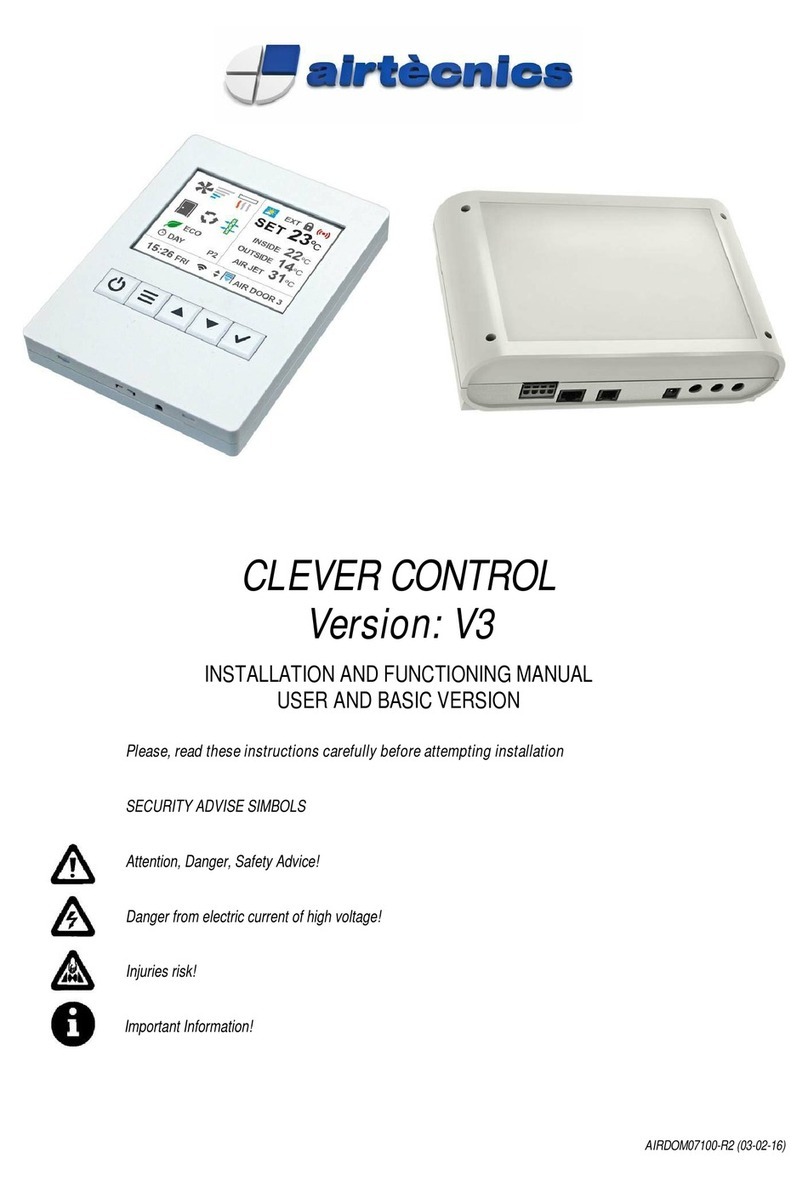
Airtecnics
Airtecnics CLEVER CONTROL V3 Installation and operation manual
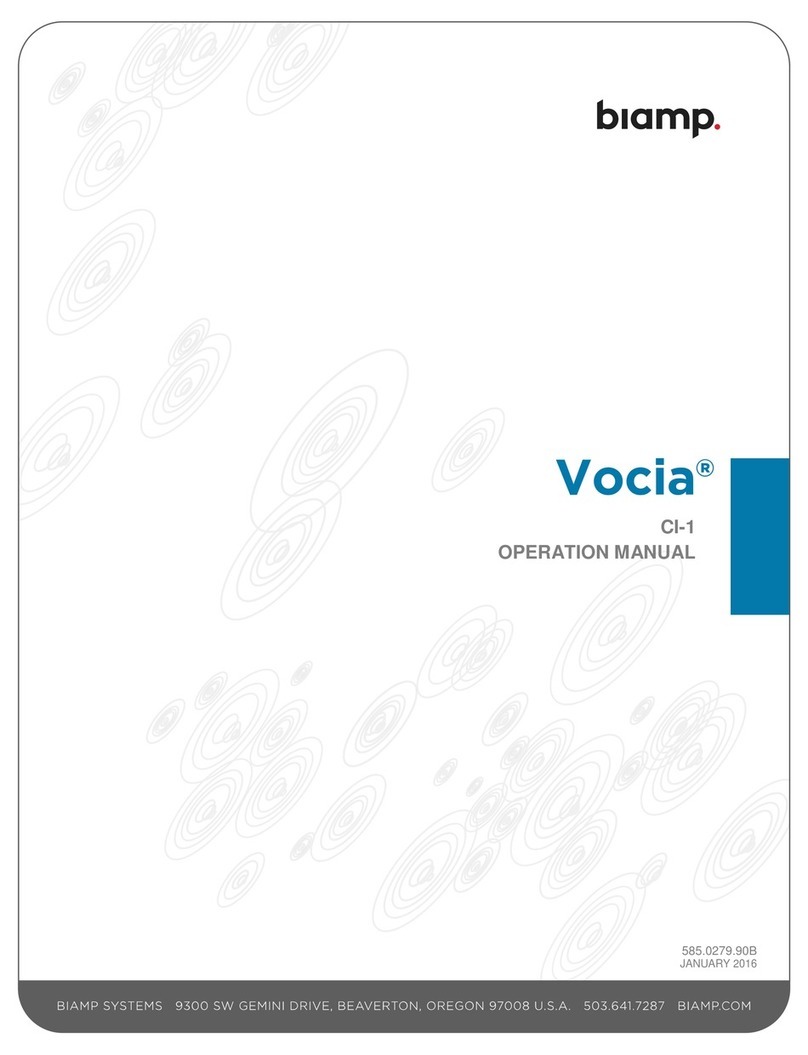
Biamp
Biamp Vocia CI-1 Operation manual
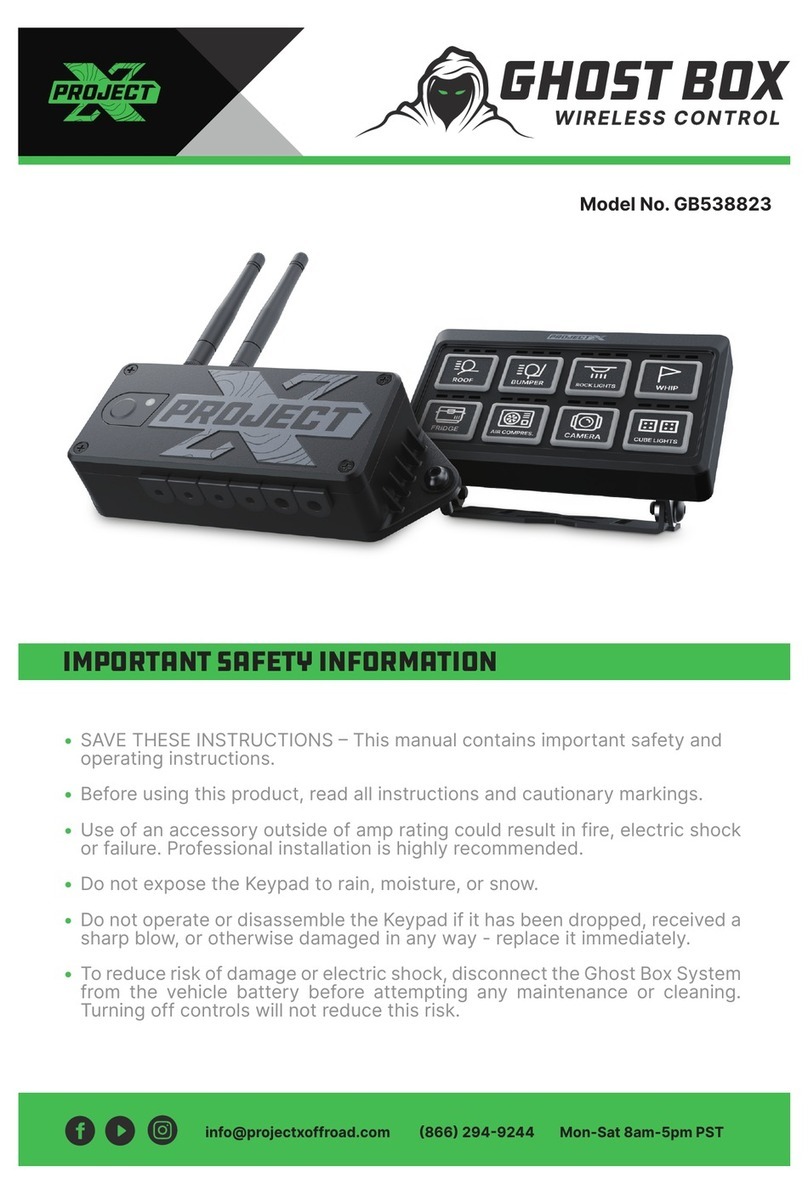
PROJECT X
PROJECT X GHOST BOX GB538823 manual
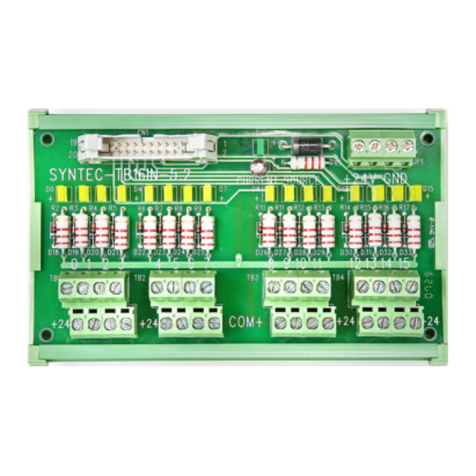
Syntec
Syntec TB16IN Installation instruction
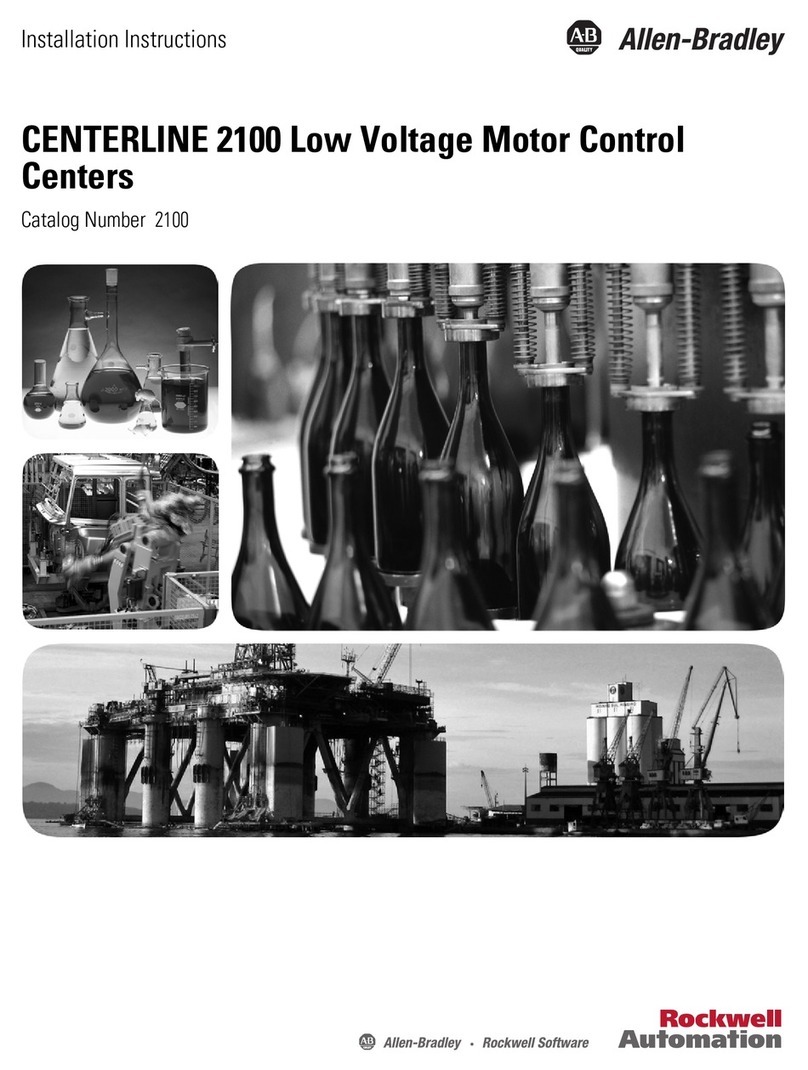
Rockwell Automation
Rockwell Automation Allen-Bradley CENTERLINE 2100 installation instructions
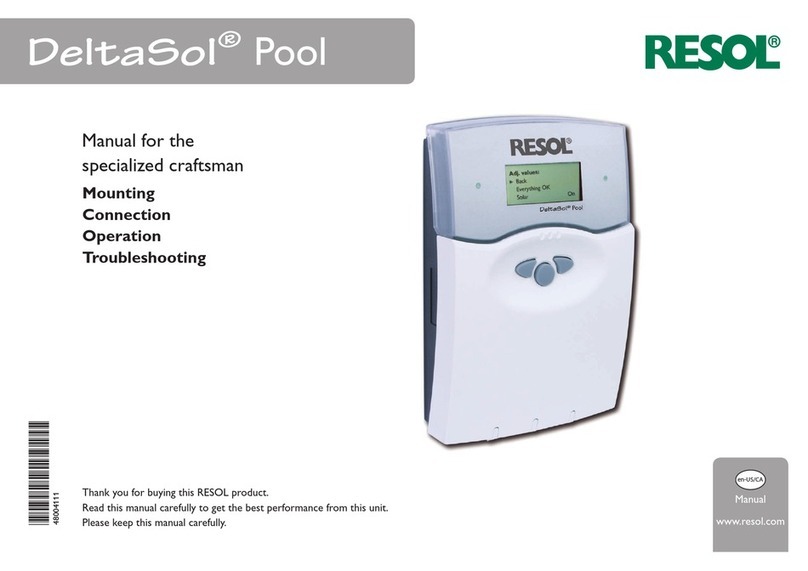
Resol
Resol DeltaSol Pool Mounting connection and operation troubleshooting

